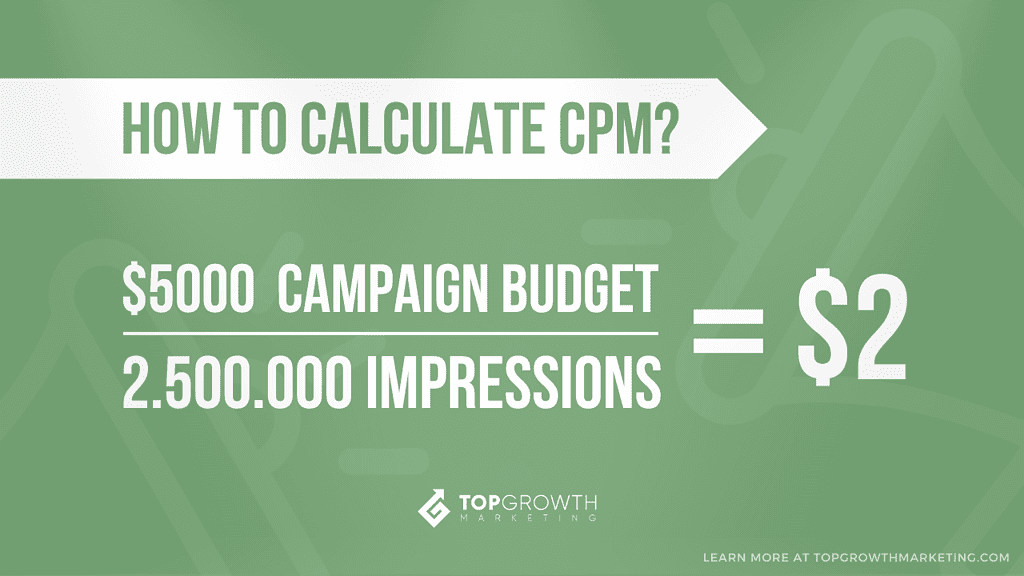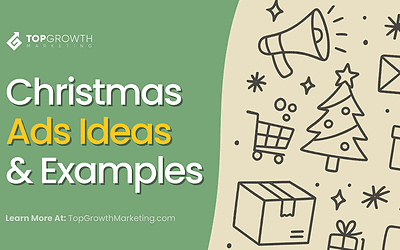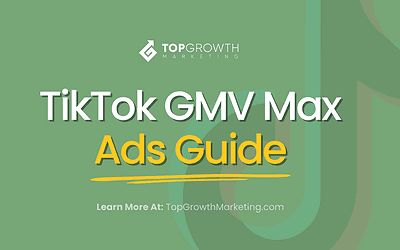CPM—or Cost Per Mille—is one of the most widely used metrics in digital advertising.
At its heart, it’s straightforward. However, its nuances can determine whether your campaign thrives or flops, making the difference between profitability and wasted budget.
In this post, we’ll break down everything you need to know about CPM, empowering you to use it confidently as a metric, and recognize when it’s not the right fit.
What Is CPM (Cost Per Mille)?
Let’s get this out of the way real quick:
💰 CPM (Cost Per Mille) is a pricing model that measures the cost an advertiser pays for every thousand impressions their ad receives. “Mille” is Latin for “thousand,” and the “M” reflects the Roman numeral for 1,000.
For publishers, CPM is a key driver of revenue potential, directly influencing their earnings from ad placements. For advertisers, it’s a way to gauge the cost of reaching an audience at scale.
For you, a small business owner, CPM is just one more metric that should be in your toolbox. It’s not always going to be the right way to look at your ad spend or analyze performance. But, it’s often a very quick and easy way to start your analysis.
How Does CPM Work?
Forget equations; let’s simplify.
CPM is the cost per 1,000 impressions. That’s the gist of it.
An impression is when someone views, hears, or otherwise perceives (but doesn’t necessarily interact with) your ad.
Here’s an example: Imagine a campaign with a $5,000 budget that generates 2,500,000 impressions. The CPM works out to $2. That’s just $2 for every 1,000 impressions.
In this case, the advertiser paid $2 per 1,000 impressions, not $100 (a common misunderstanding). The “M” in CPM ties back to that Roman numeral for 1,000, standardizing the metric across the industry.
💸Test your e-commerce store metrics other than CPM. Identify key areas to improve using our top-notch ecommerce audit calculator.
Is CPM a Good KPI?
CPM is a cornerstone pricing model in digital advertising and can serve as a solid key performance indicator (KPI) for tracking campaign reach.
As an eCommerce marketing agency, we rely on it frequently. But here’s the catch: CPM only measures impressions—the number of times an ad loads on a screen. It doesn’t tell you about engagement (like clicks) or conversions (like sales).
Think of CPM as a rough estimate of your reach cost. A high CPM might mean your ad is getting in front of a huge audience, but it doesn’t guarantee leads or revenue.
For advertisers laser-focused on conversions, metrics like click-through rate (CTR) or cost per acquisition (CPA) often provide more actionable insights. CPM shines for awareness goals, not direct response.
Overall, CPM is best utilized alongside other metrics to gain a holistic view of campaign performance. On its own, CPM simply indicates the cost efficiency of impressions.
Why It Matters
Paired with engagement and conversion data, it reveals deeper truths about targeting, creative performance, and media strategy.
On its own, CPM shows how cost-efficiently you’re buying impressions.
Impressions vs. Page Views – The Difference
Impressions vs. Page Views: What’s the Difference?
Understanding impressions versus page views is critical when working with CPM.
- Impression: Each time an ad loads on a user’s screen. A single webpage with three ads could generate three impressions from one visit.
- Page View: The number of times a webpage is loaded by a user, regardless of how many ads appear.
The Interactive Advertising Bureau (IAB) sets standards for what counts as an impression:
Time Requirement: It must stay visible for at least one continuous second after rendering.
Pixel Requirement: At least 50% of the ad’s pixels must be visible in an active browser tab.
👀 Key Takeaway: In a CPM model, you’re charged for impressions, not page views. Monitor both, but impressions drive the cost.
How Do You Calculate CPM?
We’ve already gone over this above but let’s formalize things a bit more. This is how CPM is calculated:
Cost of Advertising ÷ 1000 = CPM
Let’s walk through an example:
- A campaign with a $5,000 budget resulted in 2,500,000 impressions
- CPM = $5,000 budget / 2,500,000 impressions
- CPM = $2
So the CPM for this hypothetical campaign is $2. That means the advertiser paid $2 for every 1,000 impressions generated.
There are also free online CPM calculators that can instantly compute the CPM of any ad campaign by inputting budget and impression totals. These tools make it easy to determine and compare CPM rates across campaigns.
Benefits of The CPM Model
CPM advertising offers several potential advantages for both publishers and advertisers.
The below graphic illustrates it well, but we’ll cover each in more depth in the following sections.
Brand Reach and Recognition
With CPM pricing models, you only pay for impressions.
This allows them to maximize reach by getting ads seen by as many people as possible within your budget. Wide brand exposure can elevate recognition and awareness.
So, if we accept that there’s a benefit to people seeing your ads even if they’re not clicking on them (there is), CPM is a good way to make the most of that benefit.
Metrics Made Simple
Impressions are a clear, measurable unit. This consistency lets you optimize targeting, placements, and creatives with data-driven precision.Use CPM as a steady baseline to test variables—like how ad copy impacts CTR per thousand impressions.
CPM provides a standard, understandable metric to track and optimize.
Impressions are clear, measurable units that can be easily analyzed and attributed. This allows for data-driven optimization of ad targeting, placements, creatives, etc.
Using impressions and a grounding metric allowed you to test other aspects of your advertising using a steady variable. For instance, you can see how a change in wording affects click-through rates per thousand impressions.
Budget Friendly
You only pay for the impressions you receive, so there is less risk of unexpected costs from clicks or conversions exceeding projections. This budget stability helps manage costs.
When you have a stable metric for impressions, you can work on optimizing your campaign’s CTR to lower costs.
In other words, you can work to increase the ratio of clicks to impressions, thereby increasing the effectiveness of your campaign while still maintaining control over your budget.
The more clicks you can squeeze out of your impressions, the bigger your ROAS will be.
- You pay for impressions delivered, not unpredictable clicks or conversions. This predictability helps manage costs.
- With a stable impression cost, you can tweak campaigns to boost clicks-per-impression, stretching your return on ad spend (ROAS).
Drawbacks of Using CPM
While CPM advertising can be useful in some cases, there are a few limitations to note:
- No performance data – CPM only measures impressions. There is no insight into how many people actually engaged with the ads or converted.
- Fraud risk – Ad impressions can be artificially inflated through bot traffic, tricking advertisers into overpaying. Viewability metrics help mitigate this. This problem isn’t as bad as it once was, though, since most platforms have implemented countermeasures for this tactic.
- Branding focused – CPM campaigns are better for awareness than direct response. There is no guarantee impressions will convert to sales.
So while CPM advertising can drive reach, it should generally be combined with other models like CPC and CPA to optimize for performance.
The biggest drawback of using CPM is that it can be a huge drain for beginner advertisers.
⚠️ Be careful: If you’re not carefully optimizing your campaigns to account for the lack of other metrics, you may end up spending more than you anticipated with little return on investment.
How to Maximize Your CPM
Here are a few tips to help boost ad performance within a CPM pricing model:
- Refine targeting – Use first and third-party data to focus impressions on your best-fit audience. The CPM model often pushes you into overly broad targeting, which is something you want to avoid as much as possible.
- Test creative – A/B test ad creative to determine which variants generate the most impressions. And don’t do this just once or a few times. Constantly test new creatives even if you find something that you think works. There’s always something that might work better.
- Analyze by segment – Break down performance by geography, device, audience, etc to allocate the budget efficiently.
- Set frequency caps – Limit how often users see your ads to improve relevance and avoid oversaturation. When you have a very low CPM it’s easy to get carried away and bombard users with too many ad placements. That’s a good way to become invisible.
- Optimize towards conversions – Although you pay for impressions, still use engagement, click, and conversion data to refine strategy. Ultimately, you’re in a constant battle with your advertising platform — both trying to get the most value out of your budget.
Alternatives to CPM
Here are some popular alternative pricing models to consider:
Cost Per Action (CPA)
With CPA, advertisers only pay when users complete a specific action like a sale, signup, download, etc. This places the risk on publishers and more directly optimizes ads for conversions.
Pay-Per-Click (PPC)
PPC models like Google Ads charge advertisers for each click their ads receive. This incentivizes publishers to show ads that users find relevant enough to click on.
And, as mentioned previously, it’s not like you have to choose one or the other.
A good campaign will take advantage of various platforms and, in so doing, also take advantage of various different pricing models.
Frequently Asked Questions
Is a Higher or Lower CPM Better?
There is no universally “good” or “bad” CPM. The optimal CPM depends on your goals, targeting, and other factors. Generally, a lower CPM means cheaper audience reach. However higher CPM can signal premium inventory quality.
CPM, like other pricing models, will be closely linked to the industry in which you operate and advertise. Demand, seasonality, and your chosen advertising platforms are just some of the factors that will affect CPM so you’ll have to work out what your target CPM should be on a case-by-case basis.
Why is CPM 1000?
The “M” in CPM stands for the Roman numeral M, which equals 1,000. So CPM rates reflect the cost per 1000 impressions. Using 1000 as a standard base allows for easy comparison across ad campaigns.
What is a Typical CPM Rate?
There is no single “typical” CPM rate, as it varies widely based on factors like ad targeting, quality, and medium. Online CPM rates range from $1 globally to $65+ for targeted ads, while print ads span $8-$43 depending on the publication.
TV ads average around $25 CPM during primetime. Radio falls between $2-$8. Overall CPM rates often fall between $10-$30 for online and print and $20-$30 for TV, but can be higher or lower based on ad specifics.
Online: $1 (global) to $65+ (targeted).
Print: $8–$43, depending on the outlet.
TV: ~$25 during primetime.
Radio: $2–$8.
Use these numbers only as a coarse reference, you’ll need to check benchmarks for your industry and niche if you hope to have a robust metric.
Conclusion
While CPM advertising has its limitations, understanding cost per thousand metrics remains vital for digital marketers and publishers. When utilized strategically and analyzed holistically alongside other KPIs, CPM can be an efficient model for raising brand awareness and managing campaign budgets.
The key is to drill into performance segmentation, optimize towards engaging impressions that convert, and complement CPM with other pricing models that prioritize clicks and actions. Mastering the nuances of CPM will empower advertisers to maximize audience reach and brand lift.








The CPA information at the end was actually really interesting. I’m assuming that it would be a good metric for a lead generation campaign